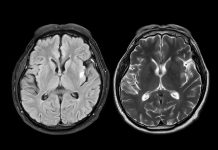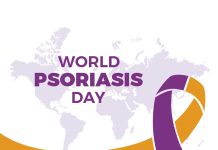Prof Lina Badimon, Chair, ESC Advocacy Committee 2018-2020 Director, Cardiovascular Program (ICCC) – IR, Hospital de la Santa Crue I Sant Pau, argues that Europe deserves more and better research & innovation in cardiovascular disease
Europe has a history of strong biomedical heart research and impactful clinical studies, which have resulted in improving cardiovascular health. Despite a period of decline in cardiovascular-related mortality thanks to the introduction of new treatments and prevention measures, cardiovascular disease (CVD) is levelling off and remains the leading cause of death worldwide and a major burden to society.
Prevention
Worryingly, there is a wrong perception that prevention is sufficient to tackle the burden of CVD. During the last decades, preventative strategies such as lifestyle recommendations have certainly saved lives, but this is far from being sufficient. CVD is the number one cause of death in the European Union (EU): more than 1.8 million people die every year as a result of CVD1, accounting for 36% of all deaths — far more than any other condition (as a comparison, cancer accounts for 26% of all deaths in the EU). This represents, on average, about 5,000 deaths per day in the EU. There are still many areas of unmet need, which have to be urgently addressed to tackle the increasing burden of CVD.
An ageing population, improved survival from heart attacks and congenital disease and a growing incidence of cardiovascular complications resulting from other diseases, such as cancer and kidney disease combine into an emerging epidemic of chronic CVD.
Cardiovascular disease research
Investing in CVD research means investing in the future health of millions of citizens in Europe and worldwide. Research and innovation in cardiology have been lagging behind other clinical areas in the last few years. New and better treatments for established CVD are required to avoid an epidemic. The records of the European Medicines Agency show that in 2017 only one new medicine for heart disease was approved, a trend which was also confirmed by the Food and Drug Administration (FDA) in the United States. The causes of this decline in innovation are multifaceted and include limited funding for CVD, the complexity and costs of clinical trials in cardiology, and an unfavourable regulatory framework for fostering CVD innovation. To mitigate this, innovative approaches are needed, including better and more flexible rules for the conduct of clinical trials and better-quality patient registries in CVD, which would allow the use of real-world data and the carrying out of registry-based observational studies(2).
Funding for CVD research
Research funding for CVD is disproportionately low at EU level, compared with other diseases. CVD and its risk factors feature very little in the call descriptions for Horizon 2020 and the number of EU-funded projects related to heart disease are far below than those in other clinical areas(3). While recognising that many of the overall themes in Horizon 2020 are relevant to cardiovascular research, the lack of funding for CVD specific projects is a major concern. CVD is less well understood than other clinical areas due to the complex interdependence of genetic and environmental factors, and the difficulties that are inherent in separating the influence of individual circumstances. Further research to understand these issues is urgently needed to develop more robust risk prediction models.
The Strategic Research Agenda
The Strategic Research Agenda for CVD, which was produced by the ERA CVD(4) Network in cooperation with the European Society of Cardiology, identifies key areas for which clinical research is needed if we want to succeed in reducing cardiovascular-related CVD mortality and morbidity.(5) The top five research priorities identified are:
- Earlier recognition of CVD.
- Repair of the heart and blood vessels.
- The interaction between CVD and other disorders
- Treatment of chronic heart failure and atrial fibrillation.
- Personalised treatment and management of CVD.
Approaches for early risk detection should take advantage of big data, and machine learning which have the potential to enhance and personalise cardiovascular health. The application of ‘omics technologies hold promise as a way to personalise therapy, identifying patients who are more likely to respond to candidate therapies.
As the next EU Framework Programme for Research and Innovation, Horizon Europe is developed, policymakers, healthcare professionals, patients and researchers must strongly advocate for cardiovascular research.
In Wisdom of the Sands, French author Antoine de Saint-Exupéry said, “As for the Future, your task is not to foresee, but to enable it.” Enabling a vigorous future in cardiovascular research is indispensable but also challenging in view of limited funding. But it is our mandate as medical professionals to advance cardiovascular medicine to be able to serve our patients.
References
(1) European Society of Cardiology: Cardiovascular Disease Statistics 2019 https://academic.oup.com/eurheartj/article/41/1/12/5670482 (2) Improving public health by improving clinical trial guidelines and their application, Martin J. Landray et al, European Heart Journal, Volume 38, Issue 21, June 1, 2017, Pages 1632–1637.
(3) The ERA-CVD Strategic Research Agenda (SRA-CVD): Challenges and Opportunities for Cardiovascular Disease Research 2019.
(4) https://www.era-cvd.eu/
(5) The ERA-CVD Strategic Research Agenda (SRA-CVD): Challenges and Opportunities for Cardiovascular Disease Research 2019.








